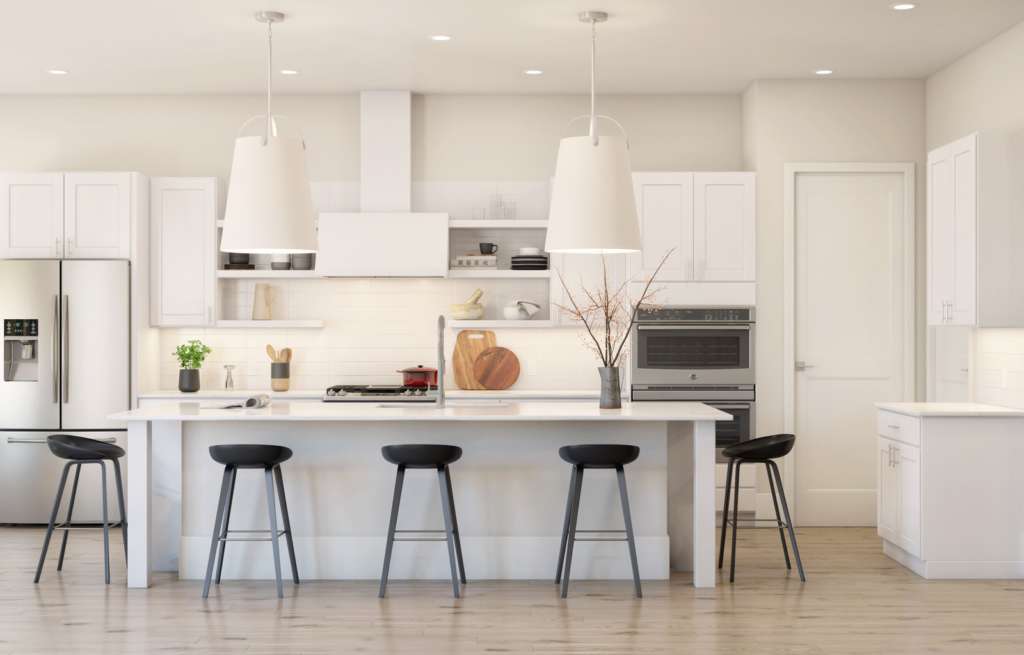A kitchen is considered the heart of the home. It is the gathering place for family and friends to come together. While there are many styles of kitchens, the newest trend is the one-wall kitchen. Sleek, bold and minimalistic. But, what exactly is a one-wall kitchen and how it is different from other kitchens?
Having a one-wall kitchen maximizes the home’s square footage while creating a more open floorplan. Traditionally, the layout of a kitchen follows the concept of a “work triangle” where the refrigerator and range are located on one wall and the sink is perpendicular or across from them. The traditional kitchen utilizes two or more walls for cabinets and countertops.

The one-wall kitchen layout, however, has the major kitchen elements on a shared wall at least 8’ wide. Similar to a production line in a commercial kitchen, the various working zones are more streamline from storage (refrigerator) to prep (sink) to cooking station (range). The other three walls of the kitchen are open and often face the home’s main living area.
Although one-wall kitchens are typically found in apartments or smaller homes, they can also be considered a unique feature of a larger home. By choosing dramatic cabinet finishes, sleek countertops, trendy hardware and appliances, the one-wall kitchen is the perfect canvas for making a bold statement in your home. On the other hand, for a less obvious approach, homeowners can opt for a discrete style with built-in appliances and seamless cabinetry.
One-Wall Kitchen Layout
- Modern and sleek aesthetic combined with a functional and simple space
- No less than 8’ wide to allow kitchen components to fit
- All kitchen elements, including cabinets, are assigned to one wall
- Typically, the sink would be located between the refrigerator and range
Pros of a One-Wall Kitchen
- Compact Design: Because the footprint of the kitchen is minimized, the adjacent living area has more space. This allows for more furniture including a dining table.
- Efficient Workflow: Having the various working zones next to each other means less time wasted moving about the kitchen.
- Cost Effective: With less countertops and cabinets to install, the cost of materials is less than a traditional kitchen layout.
Cons of a One-Wall Kitchen
- Less Surface Space: Because the major appliances take up the majority of space, the prep space is limited. Using a mobile kitchen island would add surface space to your kitchen while maintaining its minimalistic design.
- Lack of storage: While appliances and cabinets are dedicated to one wall, cabinet storage is limited for pots, pans and utensils. Adding an island with cabinets below however, would solve storage challenges.
- Resale Value: The majority of homebuyers seek out larger kitchens since it is the gathering place for entertaining. Homes with smaller kitchens may not sell as fast for as much as they would with larger kitchens.
Whether you love to cook or not, overall, the “one-wall kitchen” brings functionality to a simple, compact design in any home.
Last Updated on November 9, 2021
